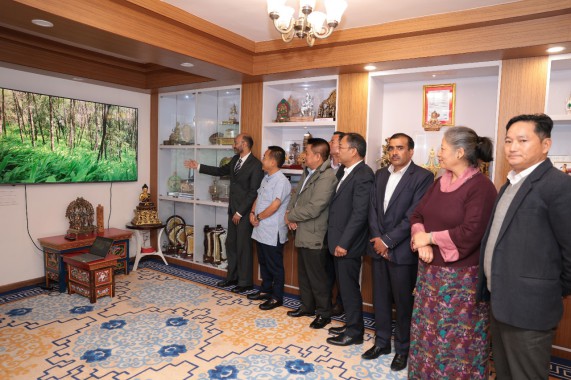




















Friday, Jan 24, 2025 07:45 [IST]
Last Update: Thursday, Jan 23, 2025 15:48 [IST]
GANGTOK,
January : Chief Minister PS Golay has informed the Sikkimese farmers about
the State government’s new initiative ‘MeroAlaichi, MeroDhan’ which aims to revive
large cardamom cultivation in Sikkim.
With
the efforts from the State Science & Technology department, we are reviving
large cardamom cultivation in Sikkim…we will be using new technology to revive
large cardamom, said the Chief Minister during the concluding day of Jorethang Maghey
Sankranti Maghey Mela 2025.
Golay
added that earlier revival efforts used to focus on cardamom saplings but this
new initiative aims to start from the seeds. All research has been done for
this and we are coming up with the ‘Mero Alaichi, Mero Dhan’…large cardamom has
good market value and if our farmers take up large cardamom cultivation, it
will be hugely beneficial for them, he said.
The
‘Mero Alaichi, Mero Dhan’ initiative aims to revive large cardamom cultivation
in the State through cutting-edge scientific and technological interventions.
Recognizing
the imperative need to revive this iconic crop of Sikkim, the Chief Minister
last year directed the Science & Technology department to take stronger
measures to boost the cultivation and production of large cardamom in Sikkim.
He chaired a high-level meeting on October 24, 2024, to discuss with the
department on the initiative to revive large cardamom.
The Department of Biotechnology (DBT), Government of India has
extended support to this initiative by convening an expert group of nation’s
leading experts to develop a comprehensive ‘strategy and action plan’ shortly to
revive large cardamom in Sikkim.
Following
this, field experiments will be initiated to tackle the disease by leveraging
cutting-edge biotechnology, genetic diversity, and eco-friendly biocontrol
methods, and to increase the large cardamom’s lifespan.
In
past, Sikkim used to be a major producer of large cardamom with hundreds of
farming families, especially in western and northern regions, dependent on this
cash crop. Over the years, large cardamom has been ravaged by
climate-change-induced diseases that have taken the form of an epidemic,
reducing cultivation by 50 per cent. Earlier,
about 25000 hectares of land were under large cardamom cultivation but at
present, it has declined to about 12500 hectares. Annual production has dropped
to 2500 metric tons from the earlier output of 5152 metric tons.
This
crisis has reduced the productive lifespan of the crop from 30 years to a mere
5-6 years, severely impacting both farmers and the agricultural economy of the
region.
